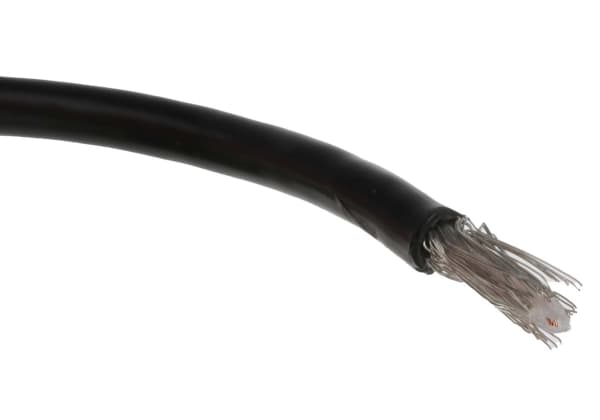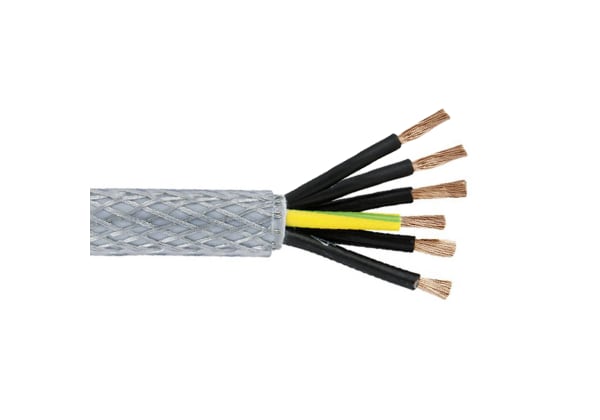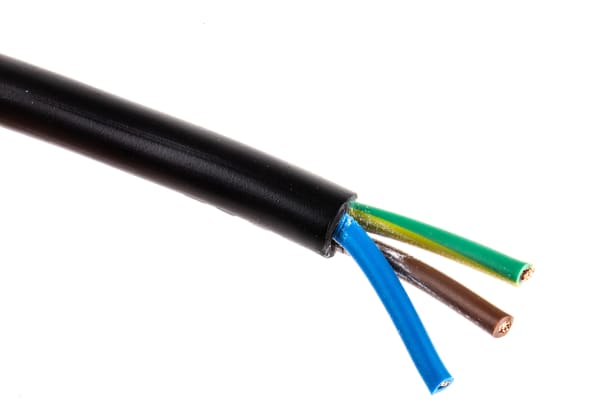- Published 15 Jan 2025
- Last Modified 15 Jan 2025
- 9 min
Guide to Cable Types & Applications: Computer Cables, Video Cables & More
Learn about different cable types, their applications, and safety considerations for reliable and secure connections in any project.


This guide explores the diverse world of cables, covering various types and their applications in electronics, networking, audio-visual systems, and more.
Learn About Different Types of Cables
Wires and cables are the unsung heroes of our modern world, silently transmitting data, power, and signals that enable communication, entertainment, and countless other functions. These essential components consist of one or more conductors (typically wires) encased in insulation and often bundled together within a protective jacket.
In Australia, cables are relied upon in countless applications, from powering homes and businesses to connecting devices and facilitating high-speed data transfer. They are the lifelines of our interconnected world, ensuring seamless communication and powering the technologies we depend on.
This article delves into the use cases of different types of cables, providing insights into their specific applications and helping you choose the right cable for your needs. We'll explore various cable categories, including:
- Power Cables
- Computer Cables
- Video Cables
- Audio Cables
- Data and Networking Cables
Computer Cable Types
Computer cables are the backbone of modern technology, enabling communication and connectivity between various devices in homes and businesses across Australia. These types of computer cables are essential for transferring data, connecting peripherals, and powering devices.
Here are the different types of computer cables commonly used:
USB Cables
USB (Universal Serial Bus) cables are widely used for connecting peripherals such as keyboards, mice, printers, and external drives to computers. They also charge devices like smartphones and tablets. USB cables come in various formats, including:
- USB-A: A standard rectangular connector found in most computers, laptops, and devices.
- USB-B: A square-shaped connector commonly used for printers and scanners.
- USB-C: A reversible oval-shaped connector that supports faster data transfer and power delivery.
- Mini-USB: A smaller connector used for older devices like digital cameras and MP3 players.
- Micro-USB: An even smaller connector commonly used for charging smartphones and tablets.
Thunderbolt Cables
Thunderbolt cables offer extremely high bandwidth and versatility, supporting both data transfer and video output. They are commonly used for connecting high-performance peripherals like external hard drives, displays, and docking stations. Features of this type of computer cable include:
- Extremely high bandwidth for fast data transfer and video output.
- Supports daisy-chaining of multiple devices.
- Ability to deliver power to connected devices.
SATA Cables
SATA (Serial ATA) cables connect internal storage devices such as hard drives and SSDs to a computer's motherboard. They offer fast data transfer rates with a compact design. SATA cables also:
- Enable high data transfer rates for fast storage access.
- Have a compact and flexible design for easy installation.
- Support hot-swapping of drives in some systems.
KVM Cables
KVM (Keyboard, Video, Mouse) cables allow a single keyboard, monitor, and mouse to control multiple computers. This type of computer cable is commonly used in server rooms and data centres to manage multiple systems from a central location. KVM cables are typically used to:
- Consolidate control of multiple computers.
- Reduce clutter and improve workspace efficiency.
- Support various video and peripheral connections.
What Computer Cable Do I Need?
To determine what type of computer cable you need, first identify the devices you are trying to connect. Next, check the ports on both devices. Computer cables come with a variety of different connectors on each end, and it is important to select a cable with the correct connectors to match the ports on your devices.
For example, if you are connecting a printer to a computer, you will need a cable with a USB-B connector to plug into the printer and a USB-A connector to plug into the computer. If you are connecting a monitor to a computer, you will need a cable with either a VGA, DVI, HDMI, or DisplayPort connector, depending on the ports available on both devices.
Additionally, consider the specific requirements of your application. If you need to transfer data at high speeds, you will need a cable that supports those speeds, such as a USB 3.0 or Thunderbolt cable. If you are connecting a device that requires a lot of power, you will need a cable that can deliver that power, such as a high-current USB-C cable.
Video Cable Types
Video cables are essential for transmitting video signals between various devices, such as computers, monitors, televisions, and projectors. In Australia, these video cable types play a crucial role in both home entertainment and professional AV setups, ensuring high-quality video display and connectivity. Here are the different video cable types commonly used:
HDMI (High-Definition Multimedia Interface)
HDMI is a widely used digital interface for transmitting high-definition video and audio signals. This AV cable is commonly used for connecting Blu-ray players, gaming consoles, laptops, and streaming devices to televisions and monitors.
- HDMI Type A: The standard HDMI connector which is commonly found on most TVs and devices.
- HDMI Type C: A smaller version of the HDMI connector, often used in portable devices.
- HDMI Type D: An even smaller micro-HDMI connector that is commonly found on tablets and some cameras.
DisplayPort (DP)
DisplayPort is another digital display interface used to connect computers to monitors. It supports high resolutions, refresh rates, and audio transmission, making it ideal for gaming and professional applications. This type of video cable is designed to:
- Support high resolutions and refresh rates for smooth video playback.
- Carry audio signals along with video.
VGA (Video Graphics Array)
VGA is an older analogue video interface that was commonly used to connect computers to CRT monitors. While less common today, it is still found on some older devices and projectors. VGA cables are:
- Used to transmit analogue video signals.
- Built with a 15-pin D-sub connector.
DVI (Digital Visual Interface)
DVI is a digital video interface that was commonly used for connecting computers to LCD monitors. It supports both digital and analogue signals, making it compatible with a range of displays. There are different types of DVI cables which are designed for specific applications and signal types, such as:
- DVI-D: Transmits digital signals only.
- DVI-A: Transmits analogue signals only.
- DVI-I: Transmits both digital and analogue signals.
What Video Cable Do I Need?
When choosing a video cable, you will first need to identify the types of devices you want to connect. Next, check the video output ports on your source device (e.g., laptop, gaming console) and the video input ports on your display device (e.g., monitor, TV). You should ensure that the cable you choose has the correct connectors to match these ports.
Additionally, consider the desired resolution and refresh rate you want to achieve. If you need to transmit high-definition video or support high refresh rates for gaming, choose a cable like HDMI or DisplayPort that can handle those requirements. For older devices or basic video connections, a VGA or DVI cable might suffice.
Audio Cables
Audio cables are essential for transmitting audio signals between various devices, from headphones and speakers to microphones and musical instruments. In Australia, these types of cables play a vital role in both personal and professional audio applications, ensuring high-quality sound reproduction and connectivity. Here are the different types of cables commonly used for audio:
AUX Cables
AUX cables, also known as auxiliary cables or 3.5mm cables, are widely used for connecting portable audio devices, such as smartphones and MP3 players, to headphones, speakers, and car stereos. They typically have a 3.5mm male connector on each end. AUX cables are also:
- Versatile and widely compatible with various audio devices.
- Compact and portable for easy connectivity.
- Available in different lengths and qualities to suit different needs.
XLR Cables
XLR cables are commonly used in professional audio applications to connect microphones, mixers, amplifiers, and other audio equipment. They feature a robust three-pin connector that provides a balanced connection for high-quality audio transmission. There are two main types of XLR cables:
- XLR Male: Connector with three pins, typically used for microphone outputs.
- XLR Female: Connector with three sockets, typically used for microphone inputs.
Optical Audio Cables
Optical audio cables, also known as TOSLINK cables, use pulses of light to transmit digital audio signals. They are commonly used for connecting home theatre systems, gaming consoles, and Blu-ray players to soundbars or AV receivers. This type of audio cable:
- Transmits high-quality digital audio signals.
- Immune to electromagnetic interference.
- Supports surround sound formats for immersive audio experiences.

Data & Networking Cables
In today's interconnected world, data and networking cables play a crucial role in facilitating communication and data transfer across various applications in Australia. These types of cables are essential for connecting computers, servers, networks, and other devices, enabling seamless data flow and connectivity. Here are the different types of cables commonly used for data and networking:
Ethernet Cable
Ethernet cables are the most common type of network cable used for connecting devices within a local area network (LAN). They transmit data at high speeds, enabling fast and reliable communication between computers, routers, switches, and other network devices. Ethernet cables are available in various categories and have different performance characteristics.
- Category 5e: Supports speeds up to 1 Gigabit per second, suitable for most home and small office networks.
- Category 6: Supports speeds up to 10 Gigabits per second, ideal for high-bandwidth applications and future-proofing networks.
- Category 6a: Supports speeds up to 10 Gigabits per second over longer distances and offers improved noise resistance.
Coaxial Cable
Coaxial cables are used for transmitting high-frequency signals and are commonly used for cable television, internet connections, and radio frequency applications. They consist of a central conductor surrounded by an insulating layer, a braided shield, and an outer jacket. Coaxial cables are designed to provide:
- Excellent signal shielding to prevent interference.
- Support for high bandwidth for transmitting video and data signals.
- Durable construction for reliable performance.
Fibre Optic Cable
Fibre optic cables transmit data as pulses of light through thin strands of glass or plastic fibres. They offer extremely high bandwidth and low signal loss, making them ideal for long-distance communication and high-speed data transfer. Common types of fibre optic cables are:
- Single-Mode Fibre: Used for long-distance transmission, carrying a single light ray for high bandwidth and low signal loss.
- Multimode Fibre: Used for shorter distances, carrying multiple light rays, suitable for LAN applications and data centres.
Cable Regulations in Australia
Australia has stringent cable regulations in place to ensure the safety and quality of electrical installations. These regulations cover various aspects, including:
- Standards: Cables used in Australia must comply with relevant Australian Standards (AS), which specify requirements for construction, performance, and safety. These standards ensure that cables meet specific quality and safety criteria.
- Certification: Many cable types require certification by regulatory bodies, such as SAA Approvals, to demonstrate compliance with Australian Standards. This certification provides assurance that the cables have been independently tested and meet safety requirements.
- Labelling: Cables must be clearly labelled with information such as voltage rating, current carrying capacity, and relevant standards compliance. This labelling helps users identify the appropriate cable for their application and ensures compliance with regulations. Furthermore, certain sectors may have additional regulations that apply to specific cable types, such as the Telecommunications Technical Standard for cables used in telecommunications infrastructure.
- Installation Rules: The installation of cables must adhere to the AS NZS 3000 (the Australian/New Zealand Wiring Rules), which provides guidelines for safe and compliant electrical installations. These rules cover aspects such as cable selection, routing, protection, and termination.
By adhering to these regulations, Australia ensures the safety and reliability of electrical installations, minimising the risk of electrical hazards and ensuring the longevity of electrical infrastructure.
RS Australia provides a wide range of different types of cables that meet Australian Standards, from computer cables to video cables and everything in between. We source our cables from top manufacturers to ensure quality, reliability, and compliance with local regulations. Shop our extensive selection of cables today and find the perfect type for your needs.
Related Articles
Related links
- Guide to Computer Cable Types & Cable Connectors Types
- Ethernet Explained: Your Essential Guide to Choosing and Using Ethernet Cables
- AV Cable Essentials: Exploring Different Types and Their Best Uses
- VGA Cables - A Complete Buyers' Guide
- The Complete Guide to Screwdrivers
- A Complete Guide to Cable Ties
- Exploring the World of Cable Joints: Types and Applications
- HDMI Cable Buying Guide


